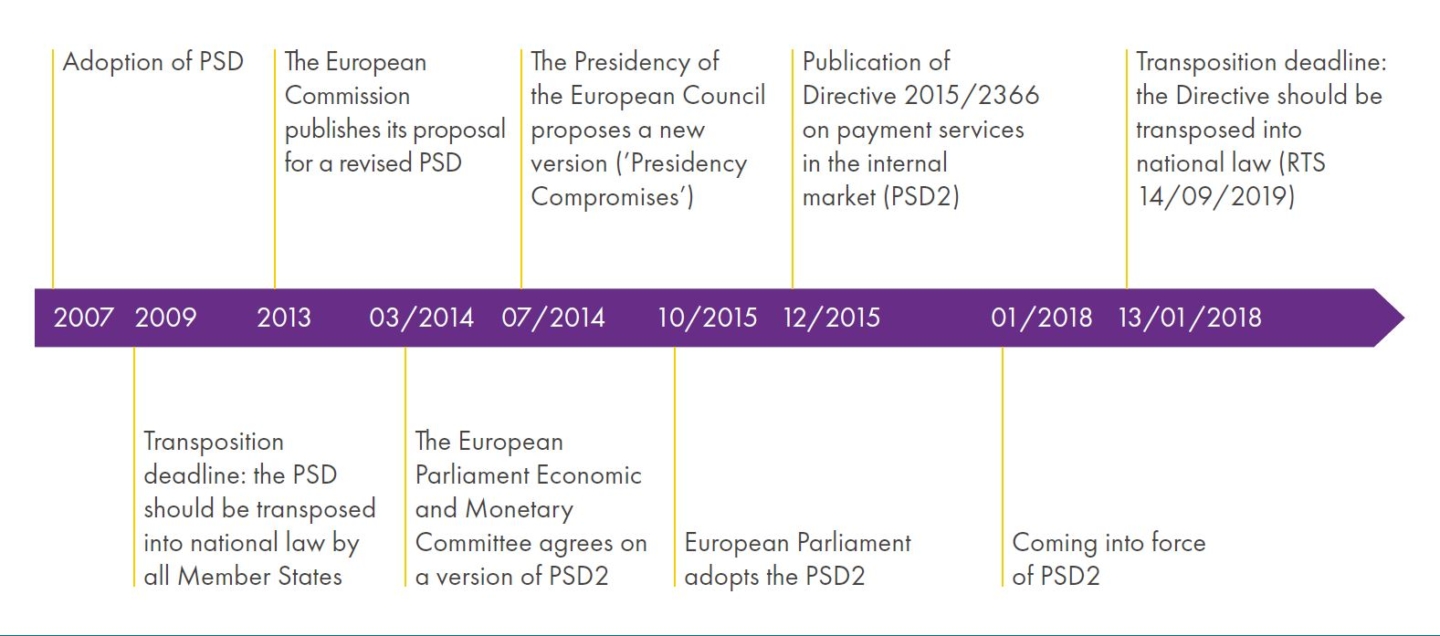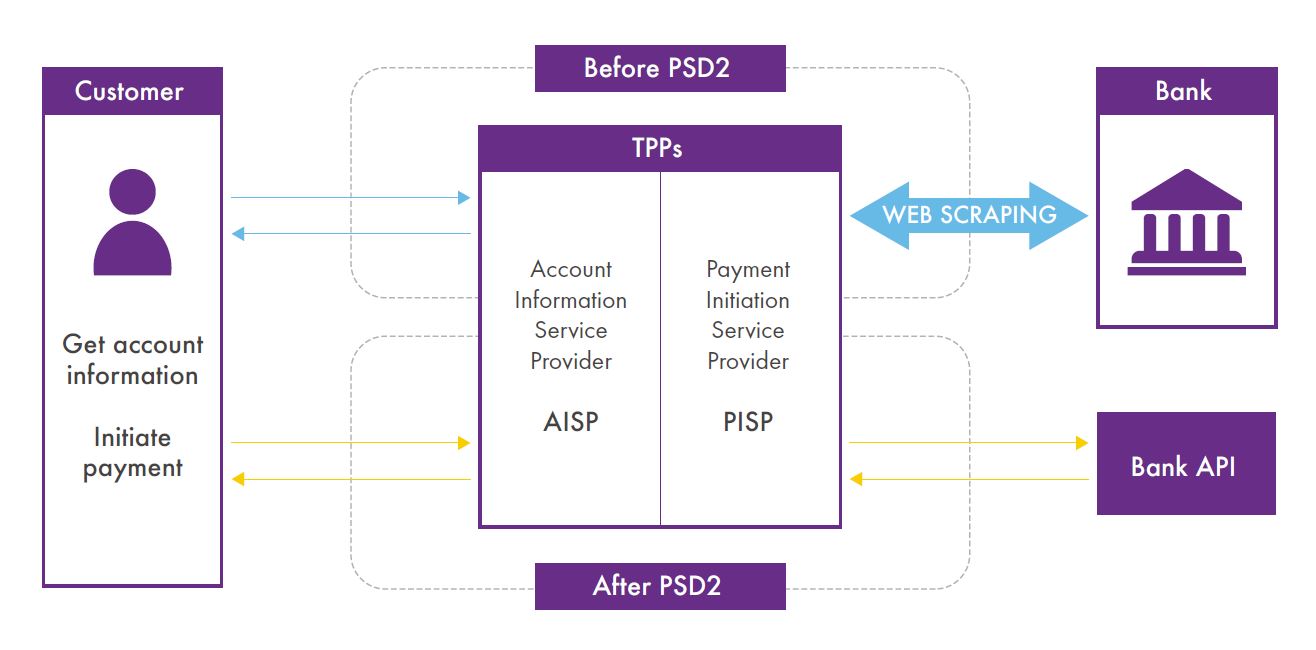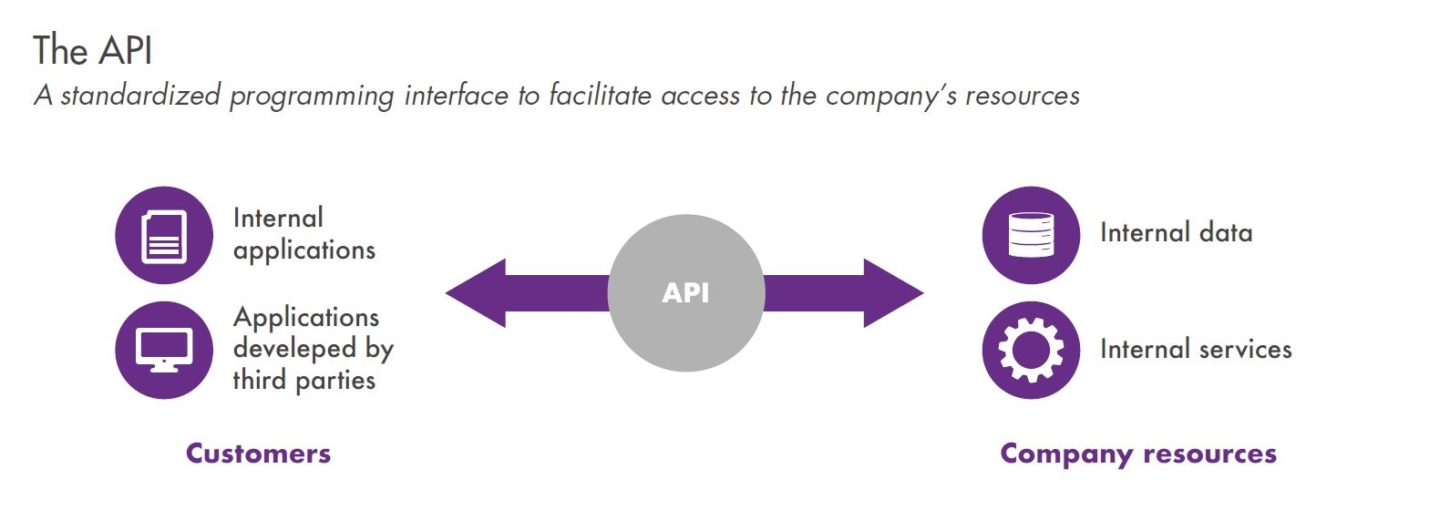In partnership with Efma (European Financial Management & Marketing Association), this article is the first part of a publication on “Open Banking & the Bank of the Future. Other publications to be published in 2019 will further develop these concepts related to Open Banking but also provide food for thought on future developments and impacts on the retail banking market.
_______________
For almost 20 years, new technologies and digital innovation have impacted every business activity, including the financial sector. Although retail banking has not fundamentally changed until now, the way of doing business in this field is facing major changes.
In fact, newcomers have recently entered the market bringing new ways to deliver offers and services, as well as a more customer-focused value proposition, to a historically traditional ecosystem.
Recently however, a new tendency has emerged: Open Banking is booming in the financial market and could profoundly disrupt the way we think about retail banking activities.
PSD2: A regulation strengthening security and stimulating competition
Background trends within the payment industry
The payments market, historically governed by credit institutions, has undergone major changes with PSD1 (Payment Services Directive 1) and the opening of the market to new players. Thus, fintechs appeared to rethink banking services and offer the possibility of performing payment services more quickly and at a competitive cost. European public authorities have confirmed the need to integrate these fintechs deeply in the banking ecosystem in the long run with the emergence of a new regulatory framework: Payment Services Directive 2 (PSD2).
Background: Why a revised payment services directive?
Dual purpose of PSD2
According to the European Commission, the objective of PSD2 is to “foster innovation, competition and efficiency” in the market and more precisely, “modernize payment services in Europe for the benefit of both consumers and businesses, in order to keep pace with the market in fast evolution.”
As expressed by the European Commission, the primary objective of PSD2 is to contribute to a more efficient and integrated European payments market. To this end, it aims at ensuring fair competition between the different payment service providers, including new players.
The second objective expressed by the European Commission is safety and consumer protection. PSD2
introduces new security requirements for the initiation and processing of electronic payments and the
protection of consumers’ financial data.
PSD2: A significant compliance effort for licensed banks
Opening up data to third parties
Consent management and synergies with GDPR
PSD2 and the General Data Protection Regulation (GDPR) are two major reforms of 2018. At first sight, the two regulations seem to support conflicting philosophies and objectives:
- PSD2 advocates for the opening of banking information systems to account aggregators and payment initiators: banks hold data whose sharing is essential to stimulate competition. There is a clear desire to open the sector to new players. We are witnessing an opposition between these new players – fintechs – and banks whose main challenge is to keep hold of client banking data.
- GDPR imposes a strict framework on companies processing the personal data of European customers: the customer must have control over what is done with his or her personal data.
PSD2: An opportunity for banks to rethink their business model
Adaptation strategies for banks in a reshaped industry
In order to redefine their positioning on the market, licensed banks can play on two axes :
• Activities : should licensed banks extend their offering to new activities, with client interaction, such as
account aggregation?
• Scope of services : should licensed banks enrich their existing services by upgrading their scope, for
example with peer-to-peer payment services?
Four different strategies can be highlighted :
Compliance
Expansion
Competition
Transformation
Issues and development of APIs
The different types of APIs
PRIVATE APIs
PUBLIC APIs
OPEN APIs






